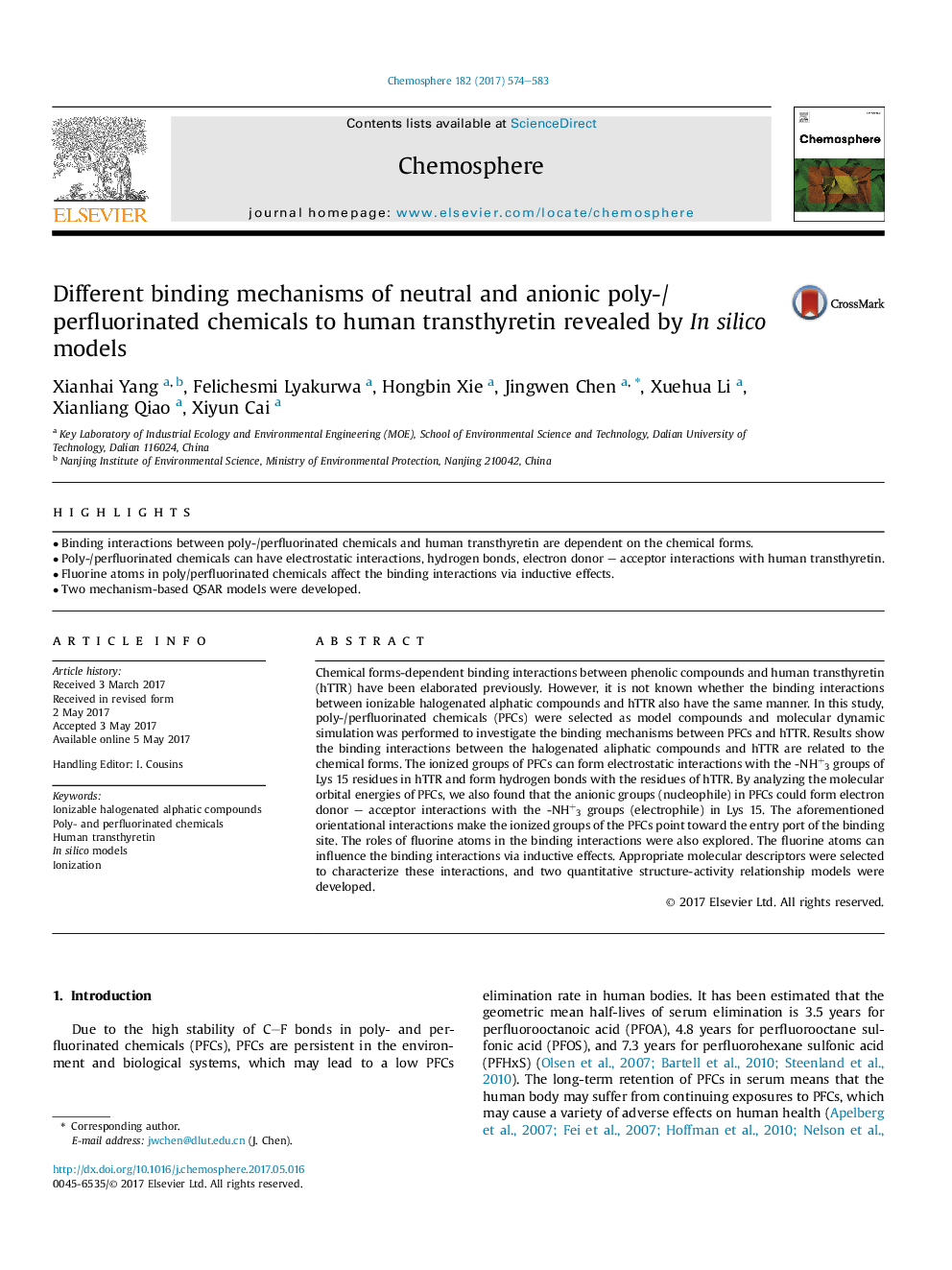| کد مقاله | کد نشریه | سال انتشار | مقاله انگلیسی | نسخه تمام متن |
|---|---|---|---|---|
| 5746918 | 1618789 | 2017 | 10 صفحه PDF | دانلود رایگان |
- Binding interactions between poly-/perfluorinated chemicals and human transthyretin are dependent on the chemical forms.
- Poly-/perfluorinated chemicals can have electrostatic interactions, hydrogen bonds, electron donor - acceptor interactions with human transthyretin.
- Fluorine atoms in poly/perfluorinated chemicals affect the binding interactions via inductive effects.
- Two mechanism-based QSAR models were developed.
Chemical forms-dependent binding interactions between phenolic compounds and human transthyretin (hTTR) have been elaborated previously. However, it is not known whether the binding interactions between ionizable halogenated alphatic compounds and hTTR also have the same manner. In this study, poly-/perfluorinated chemicals (PFCs) were selected as model compounds and molecular dynamic simulation was performed to investigate the binding mechanisms between PFCs and hTTR. Results show the binding interactions between the halogenated aliphatic compounds and hTTR are related to the chemical forms. The ionized groups of PFCs can form electrostatic interactions with the -NH+3 groups of Lys 15 residues in hTTR and form hydrogen bonds with the residues of hTTR. By analyzing the molecular orbital energies of PFCs, we also found that the anionic groups (nucleophile) in PFCs could form electron donor - acceptor interactions with the -NH+3 groups (electrophile) in Lys 15. The aforementioned orientational interactions make the ionized groups of the PFCs point toward the entry port of the binding site. The roles of fluorine atoms in the binding interactions were also explored. The fluorine atoms can influence the binding interactions via inductive effects. Appropriate molecular descriptors were selected to characterize these interactions, and two quantitative structure-activity relationship models were developed.
Journal: Chemosphere - Volume 182, September 2017, Pages 574-583
